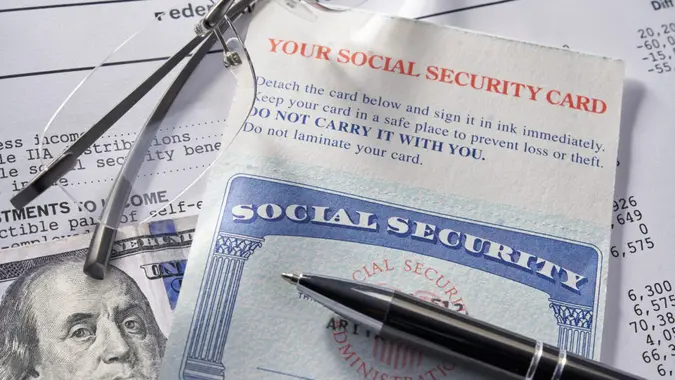The ‘Ideal’ Age To Start Saving for Retirement — and What To Do If You’re Late

Commitment to Our Readers
GOBankingRates' editorial team is committed to bringing you unbiased reviews and information. We use data-driven methodologies to evaluate financial products and services - our reviews and ratings are not influenced by advertisers. You can read more about our editorial guidelines and our products and services review methodology.

20 Years
Helping You Live Richer

Reviewed
by Experts

Trusted by
Millions of Readers
Although 83% of Americans believe there’s no set age to achieve life milestones, nearly half (45%) wish they had started saving earlier, according to a recent Empower study. And when it comes to saving for retirement, in particular, Americans believe the ideal age to start is 27.
Do experts agree? Here’s a look at the actual “ideal” age to start saving — and what to do if you’re already past that age and have yet to begin.
Is 27 the Ideal Age To Start Saving for Retirement?
There is no one-size-fits-all perfect age to start saving for retirement — it’s simply “as early as you possibly can,” said Scott Schleicher, senior manager of advisory and planning at Empower.
“There’s an old saying in investing: ‘Time in the market beats timing the market,'” he said. “That’s especially true when it comes to retirement planning. The power of compounding — earning returns on your returns — is one of the most reliable forces in wealth building, but it needs time to work.”
Schleicher said to think of saving for retirement like planting a tree.
“If you plant it when you’re young, it has decades to grow, weather storms and provide shelter,” he said. “But if you wait until you’re 40 to plant that tree, you’ll be hoping for shade during retirement that may not arrive in time.”
How To Catch Up on Retirement Savings If You Started Late
If you’re already past age 27 and feeling behind, don’t waste time with regret — take action.
“The IRS gives you some tools to help close the gap, and it starts with maximizing your contributions,” Schleicher said.
In 2025, you can contribute up to $23,500 to a 401(k). If you’re 50 or older, you can add an extra $7,500 in “catch-up” contributions.
“That’s over $30,000 per year you can shelter in a tax-deferred account,” Schleicher said. “And if your employer offers a match, don’t leave that money on the table — that’s free retirement savings.”
Another lever you can pull is the Roth 401(k), which uses after-tax dollars now in exchange for tax-free withdrawals later.
“The key is that taxes are either paid now or later — the Roth simply flips the sequence compared to a traditional IRA,” Schleicher said. “Roth IRAs offer some similar benefits, but the contribution ceiling is lower — $7,000 in 2025, or $8,000 if you’re over 50.”
Overall, the best ways to catch up are to stay aggressive with your savings rate, stay diversified with your investments and stay patient with your expectations, Schleicher said.
Smart Strategies To Maximize Your Retirement Plan
According to the Empower survey, 42% of Americans see retirement planning as the most significant wealth-building opportunity. Whether you’re starting at 27 or 47, you should be taking steps to ensure you are getting the most out of your retirement plan.
Schleicher said that there are three things Americans should be doing to maximize their retirement savings:
- Contribute consistently, regardless of what the markets are doing.
- Maximize tax benefits, whether through pre-tax 401(k) or after-tax Roth strategies.
- Diversify intelligently — not just across stocks, but across asset classes like bonds, real estate and alternatives to lower overall portfolio volatility.
“Retirement planning isn’t about trying to beat the markets — it’s about building a resilient strategy that works across all sorts of environments,” Schleicher said. “And that’s something you can’t afford to delay.”
 Written by
Written by  Edited by
Edited by 

























